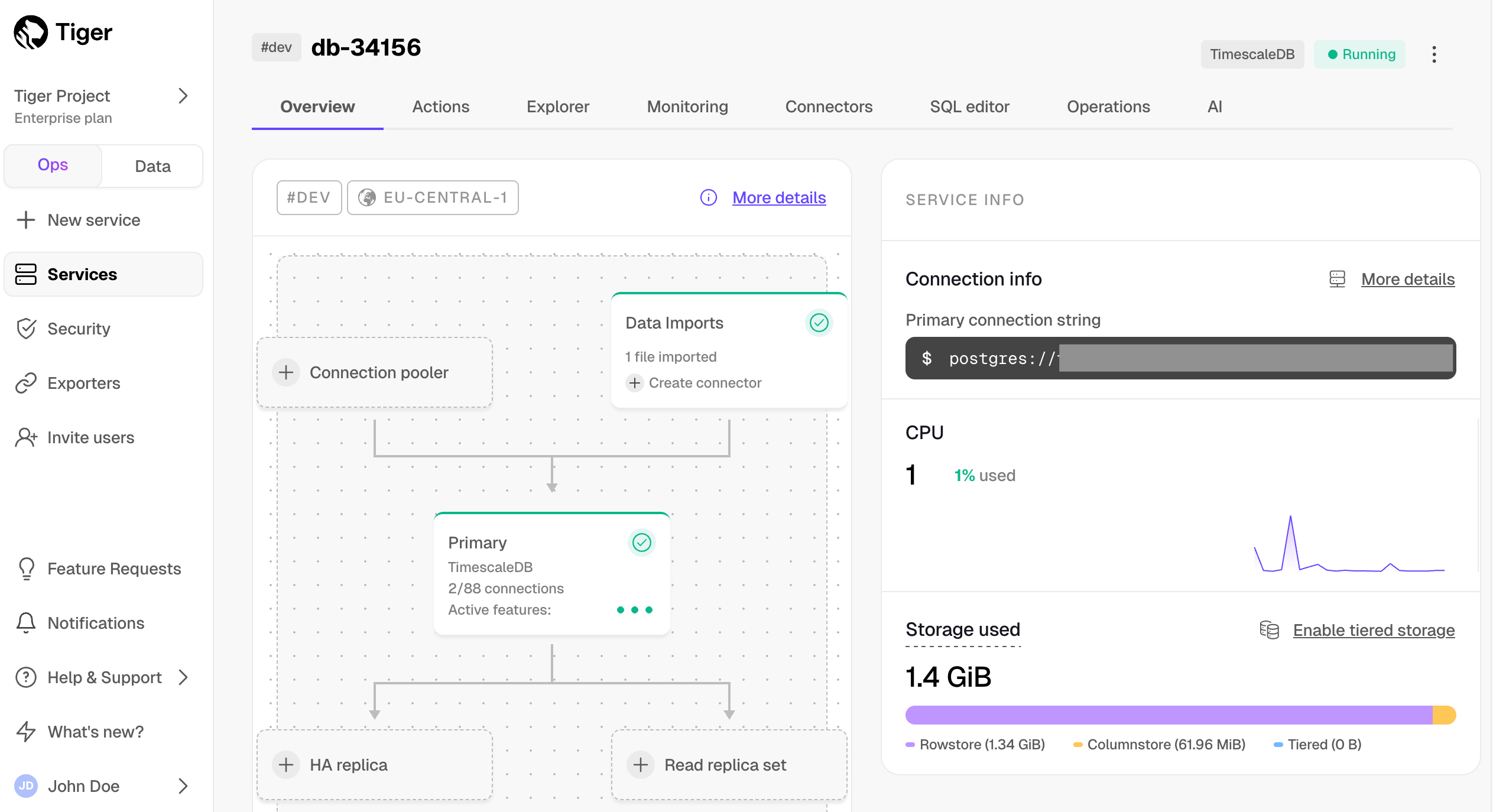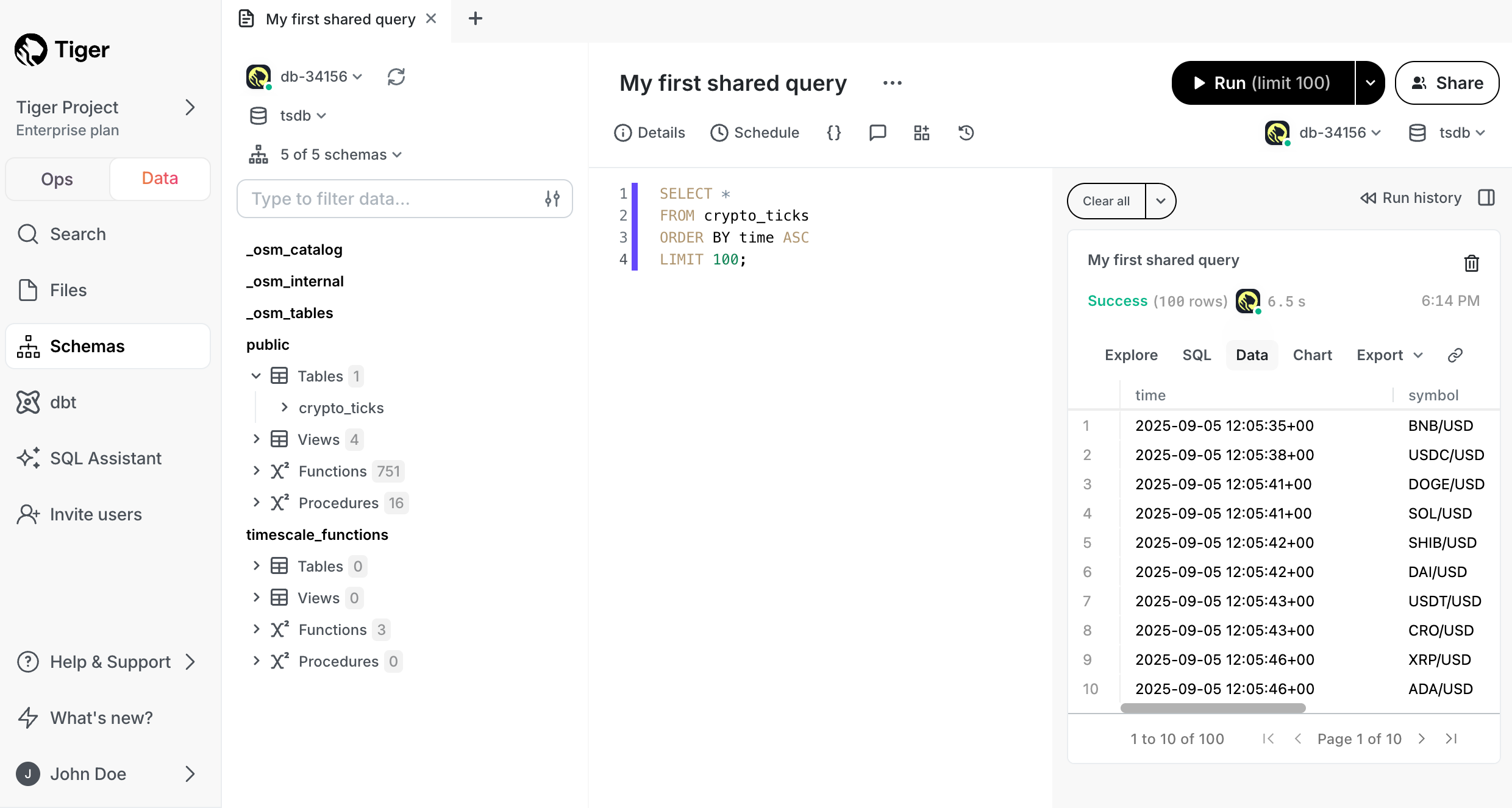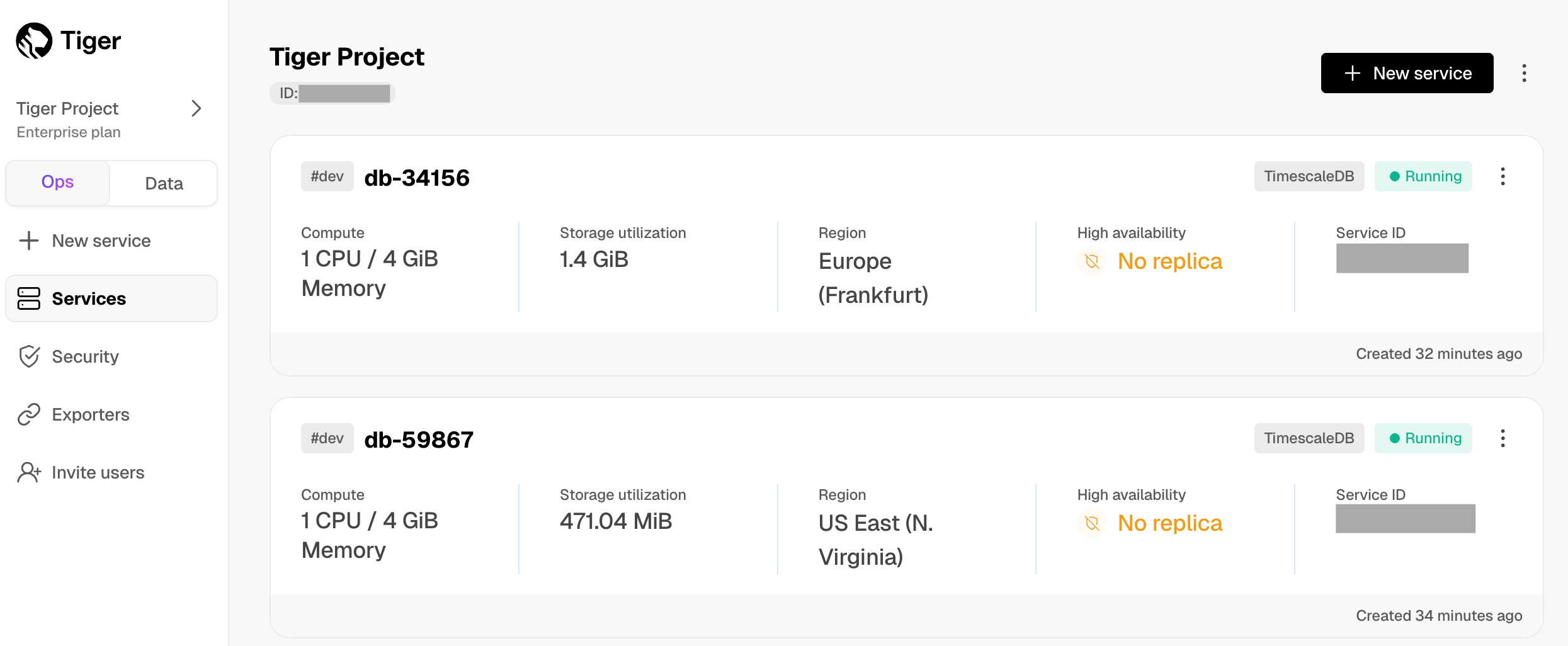Tiger Cloud: Performance, Scale, Enterprise, Free
Self-hosted products
MST
Tiger Cloud is the modern Postgres data platform for all your applications. It enhances Postgres to handle time series, events, real-time analytics, and vector search—all in a single database alongside transactional workloads.
You get one system that handles live data ingestion, late and out-of-order updates, and low latency queries, with the performance, reliability, and scalability your app needs. Ideal for IoT, crypto, finance, SaaS, and a myriad other domains, Tiger Cloud allows you to build data-heavy, mission-critical apps while retaining the familiarity and reliability of Postgres.
A Tiger Cloud service is a single optimised Postgres instance extended with innovations in the database engine and cloud infrastructure to deliver speed without sacrifice. A Tiger Cloud service is 10-1000x faster at scale! It is ideal for applications requiring strong data consistency, complex relationships, and advanced querying capabilities. Get ACID compliance, extensive SQL support, JSON handling, and extensibility through custom functions, data types, and extensions.
Each service is associated with a project in Tiger Cloud. Each project can have multiple services. Each user is a member of one or more projects.
You create free and standard services in Tiger Cloud Console, depending on your pricing plan. A free service comes at zero cost and gives you limited resources to get to know Tiger Cloud. Once you are ready to try out more advanced features, you can switch to a paid plan and convert your free service to a standard one.

Note
The Free pricing plan and services are currently in beta.
To the Postgres you know and love, Tiger Cloud adds the following capabilities:
Standard services:
- Real-time analytics: store and query time-series data
at scale for real-time analytics and other use cases. Get faster time-based queries with hypertables, continuous aggregates, and columnar storage. Save money by compressing data into the columnstore, moving cold data to low-cost bottomless storage in Amazon S3, and deleting old data with automated policies.
- AI-focused: build AI applications from start to scale. Get fast and accurate similarity search with the pgvector and pgvectorscale extensions.
- Hybrid applications: get a full set of tools to develop applications that combine time-based data and AI.
All standard Tiger Cloud services include the tooling you expect for production and developer environments: live migration, automatic backups and PITR, high availability, read replicas, data forking, connection pooling, tiered storage, usage-based storage, secure in-Tiger Cloud Console SQL editing, service metrics and insights, streamlined maintenance, and much more. Tiger Cloud continuously monitors your services and prevents common Postgres out-of-memory crashes.
- Real-time analytics: store and query time-series data
Free services:
Postgres with TimescaleDB and vector extensions
Free services offer limited resources and a basic feature scope, perfect to get to know Tiger Cloud in a development environment.
You manage your Tiger Cloud services and interact with your data in Tiger Cloud Console using the following modes:
| Ops mode | Data mode |
|---|---|
 |  |
You use the ops mode to:
| Powered by PopSQL, you use the data mode to:
NoteThis feature is not available under the Free pricing plan. |
To start using Tiger Cloud for your data:
- Create a Tiger Cloud account: register to get access to Tiger Cloud Console as a centralized point to administer and interact with your data.
- Create a Tiger Cloud service: that is, a Postgres database instance, powered by TimescaleDB, built for production, and extended with cloud features like transparent data tiering to object storage.
- Connect to your Tiger Cloud service: to run queries, add and migrate your data from other sources.
You create a Tiger Cloud account to manage your services and data in a centralized and efficient manner in Tiger Cloud Console. From there, you can create and delete services, run queries, manage access and billing, integrate other services, contact support, and more.
Now that you have an active Tiger Cloud account, you create and manage your services in Tiger Cloud Console. When you create a service, you effectively create a blank Postgres database with additional Tiger Cloud features available under your pricing plan. You then add or migrate your data into this database.
To create a free or standard service:
In the service creation page
, click
+ New service.Follow the wizard to configure your service depending on its type.
Click
Create service.Your service is constructed and ready to use in a few seconds.
Click
Download the configand store the configuration information you need to connect to this service in a secure location.This file contains the passwords and configuration information you need to connect to your service using the Tiger Cloud Console data mode, from the command line, or using third-party database administration tools.
If you choose to go directly to the service overview, Connect to your service shows you how to connect.
To run queries and perform other operations, connect to your service:
Check your service is running correctly
In Tiger Cloud Console
, check that your service is marked as
Running.
Connect to your service
Connect using data mode or SQL editor in Tiger Cloud Console, or psql in the command line:
Quick recap. You:
- Manage your services in the ops mode
in Tiger Cloud Console: add read replicas and enable high availability, compress data into the columnstore, change parameters, and so on.
- Analyze your data in the data mode
in Tiger Cloud Console: write queries with autocomplete, save them in folders, share them, create charts/dashboards, and much more.
- Store configuration and security information in your config file.
What next? Try the key features offered by Tiger Data, see the tutorials, interact with the data in your Tiger Cloud service using your favorite programming language, integrate your Tiger Cloud service with a range of third-party tools, plain old Use Tiger Data products, or dive into the API reference.
Found an issue on this page?Report an issue or Edit this page
in GitHub.